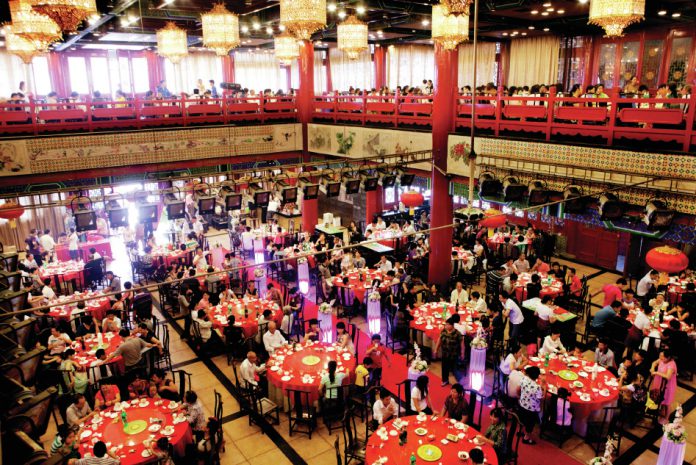Research Corner | A partnership between Macau Business and the Institute for Tourism Studies (IFT)
Choosing high-value customers over simply more clients
Popular restaurants might increase revenue by better managing meal bookings, indicates study involving IFT scholar
Having more diners seeking a meal booking than a restaurant can serve at one sitting, might seem a dream come true for many restaurant managers. For some eateries, however, this is business as usual, raising the issue of how to maximise revenue under such circumstances. A study involving a scholar from the Institute for Tourism Studies (IFT) concludes that the traditional policy of ‘first-come, first-served’ might not be that efficient when it comes to maximising cash yield from the business.
 “Average spend per person per minute is a better indicator for evaluating any intending party’s real value,” the researchers noted, adding that identifying and being able to serve as many of those customers with high average spend per person per minute as possible, outperforms client cherry-picking practices such as judging by party size and traditional first-come, first-served methods.
“Average spend per person per minute is a better indicator for evaluating any intending party’s real value,” the researchers noted, adding that identifying and being able to serve as many of those customers with high average spend per person per minute as possible, outperforms client cherry-picking practices such as judging by party size and traditional first-come, first-served methods.
The study was co-authored by Wang Jiana-Fu and Lin Yi-Chiun, from the National Chung Hsing University, in Taichung, Taiwan in partnership with IFT’s Andy Kuo Chen-Feng and Weng Shao-Jen from Tunghai University, also in Taichung.

The researchers nonetheless noted that “restaurants with different styles and price levels attract customers with different characteristics, which makes it difficult to delineate simple rules . . . that can be applied across the board” when it comes to forecasting average spend per person per minute. Thus, they suggest each individual eatery should draft its own set of rules based upon its background observing that “usually, a historical purchasing database can contribute a lot for building segmentation rules.”
The conclusions were featured in the paper Cherry-picking Restaurant Reservation Customers published in the Asia Pacific Management Review.
The study was based upon data from a Chinese-cuisine restaurant with 92 tables and 834 seats in Taiwan. Researchers collected information from 577 dining parties between September and October 2011, and used it to create a model to test different cherry-picking strategies that could be applied by venue managements to clients wanting to make a restaurant booking.

Time is money
“When demand is expected to exceed capacity, and a restaurant is quite unable to serve every intending customer, cherry-picking them may both earn more revenue and improve operational use of fixed resources,” noted the researchers. They added that average spend per person per minute – based simultaneously upon spending, party size and meal duration – could make it easy to compare the estimated business value of different customers.
“For a restaurant manager, the most intuitive and simple way to distinguish a party’s contribution is to view its spending,” the researchers stated. “In practice, many restaurants set up a minimum spending requirement for each customer or party to make sure their establishment performs above a certain level. But considering spending while ignoring the factor of meal duration is not sufficient. For example, a party of two spending US$20 and staying for an hour is more beneficial to the restaurant than another party of two spending the same amount over two hours.”
Cherry-picking from people wanting to make a meal booking could offer advantages to restaurants, while reducing dissatisfaction among rejected patrons. “At the time an intending customer is requesting a booking slot, only management knows the state of the reservations, and has the option of deciding whether or not to agree to the request, or the option of offering an alternative slot, if that is what best benefits the restaurant,” they noted.
“In the end, a decision to turn down a booking is a decision the party has no way of disputing. If the party is willing to wait for a vacant slot, the request can be assigned to a waiting list, which if the restaurant has underestimated customer volume is of potential benefit to the restaurant.”
The researchers noted that some typically busy restaurants could not necessarily record huge benefits from the introduction of client cherry-picking policies.
“Restaurants that operate with fixed menu prices for every customer and with stable customer meal durations do not need to cherry-pick customers,” they wrote. “However, restaurants with varied customer spending and meal durations will find it worthwhile to consider what kind of customers benefit them more.”
The researchers
Wang Jiana-Fu is an Associate Professor at the Department of Marketing of National Chung Hsing University, in Taiwan. He has a PhD from the University of California, Irvine, in the United States. His academic research interests include logistics management, supply chain management and e-commerce.
Lin Yi-Chiun is a researcher also associated with the Department of Marketing of National Chung Hsing University.
 Andy Kuo Chen Feng, an Assistant Professor at the Institute for Tourism Studies (IFT), specialises in hospitality operations management, and marketing. He holds a PhD in hospitality and tourism management from Purdue University, in Indiana, in the United States. Prior to joining IFT, Dr. Kuo headed the Department of Hospitality Management at Tunghai University, in Taichung, Taiwan. In addition, he has held several consulting positions related to hospitality.
Andy Kuo Chen Feng, an Assistant Professor at the Institute for Tourism Studies (IFT), specialises in hospitality operations management, and marketing. He holds a PhD in hospitality and tourism management from Purdue University, in Indiana, in the United States. Prior to joining IFT, Dr. Kuo headed the Department of Hospitality Management at Tunghai University, in Taichung, Taiwan. In addition, he has held several consulting positions related to hospitality.
Weng Shao-Jen is an Associate Professor at the Department of Industrial Engineering and Enterprise Information from Tunghai University. He has a PhD in industrial engineering from Arizona State University, in the United States.
The paper
Wang Jiana-Fu, Lin Yi-Chiun, Kuo Chen Feng and Weng Shao-Jen: Cherry-picking Restaurant Reservation Customers, Asia Pacific Management Review, Volume 22, Issue 3, pages 113-121, 2017
http://dx.doi.org/10.1016/j.apmrv.2016.12.001
























